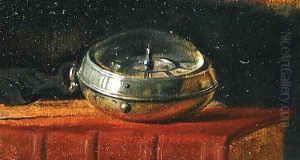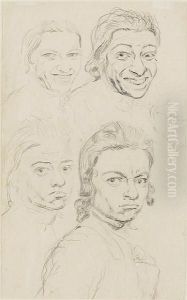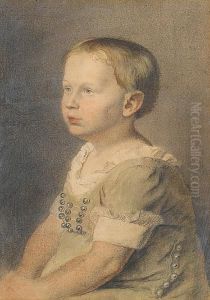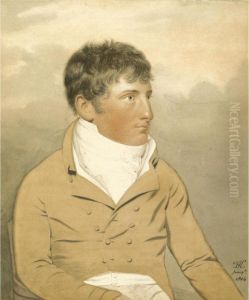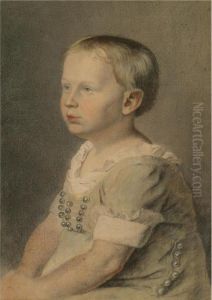Thomas Kerrich Paintings
Thomas Kerrich was an English artist, antiquary, and librarian who made significant contributions to the study of art history and archaeology during the late 18th and early 19th centuries. He was born in 1748 in Dersingham, Norfolk, England, to a family of clerics. Kerrich's interest in the arts was cultivated from a young age, and he developed a keen eye for drawings and prints.
Educated at Magdalene College, Cambridge, Kerrich became a fellow of the college in 1771. His academic pursuits were diverse, including theology, but he was especially passionate about art. Although not widely known as a practicing artist, Kerrich was highly skilled in drawing and had a particular interest in classical art and antiquities.
During his lifetime, Kerrich amassed an extensive collection of drawings and prints, which he used for teaching and research. His work as an antiquary led him to undertake numerous travels to study and document ancient sites, art, and artifacts. Kerrich's collections were notable for their range and depth, including items from Ancient Greek, Roman, and Egyptian origins, as well as works from his contemporaries.
In 1799, he was appointed as the librarian of the University Library at Cambridge, a position he held until his death. Kerrich's role as a librarian allowed him to further his research and contribute to the organization and expansion of the university's collections. His meticulous nature and dedication to scholarship were evident in his work on the library's manuscripts and rare books.
Thomas Kerrich was also involved in the Society of Antiquaries of London and contributed to the society's mission to promote the study of the material past. He is remembered for his scholarly approach to the arts and antiquities and for his role in promoting the appreciation and understanding of historical artifacts.
Kerrich died in 1828, having left behind a legacy as a dedicated scholar and collector. His contributions to the fields of art history and archaeology continued to be recognized after his death, particularly through the continued use and study of his collections. The items he gathered throughout his life remain valuable resources for researchers and historians, providing insights into the art and culture of past civilizations.
